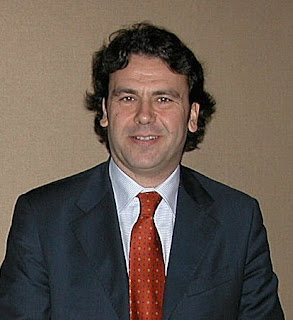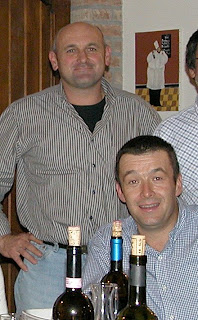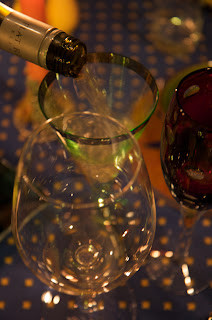I always look forward to visiting Europe several times a year in search of new wines to import into Canada and Asia. Each time, I am fascinated to meet a few young winemakers who are quietly making a name for themselves by creating wines that are exciting and fresh, without sacrificing terroir and tradition.
One such visit brought me to the Roussillon, a rugged and beautiful region of Southern France, near the border of Spain. The first time I visited this region was in 1995 on a recommendation of a French wine writer in Canada who hails from the area. Through my contact, I was kindly introduced to the region's respected Dean of Oenology who took me on as an ardent student of the region's wine history and showed me around vineyards and wineries he consulted. Back then, I saw an incredible potential for making top quality wines that reminded me of Santa Barbara, California
Sadly, this first visit was a real disappointment in terms of finding consistent quality wines, save a few producers like Domaine Gauby and Sarda Malet, as well as excellent Banyuls and Muscat. I came back to this region 3 more times, still unimpressed as before.
Forward to February 2009 at a Muscat Conference in Perpignan where a wonderful surprise awaited me. Not expecting much based on my previous experience, I simply went around the hall tasting samples. Quite suddenly, I started noticing an upward trend in quality and style in many of the booths I visited: Domaine Tour Vieille, Domaine des Schistes, Sarda Malet, Piquemal, Mas Cremat, to name a few. Finally, I met a young man at a small table where I tasted what I considered the finest white wine I have ever tasted in years: Domaine les terres de Fagayra Maury Blanc 2008: exquisite, luscious and well balanced. I'm even at a lost for words here.

The wine came from Roc des Anges, a new domaine owned by a dynamic young couple, Stephane and Marjorie Gallet. Stephane was a winemaker at the famous Mas Amiel in Maury, and Marjorie came from the Rhone valley where she worked at Yves Cuilleron and Pierre Gaillard. This couple has truly captivated me and renewed my hope for the Roussillon.
For me to go crazy over a wine is rare, as I have always been a tough taster and quite unrestrained about my assessment, good or bad, of any wine during a tasting. But this was a real discovery, completely unexpected and even made me giddy (if I can use that word). This is what I call a WOW moment - when everything just falls into place. I rarely have this experie

nce, even when tasting top grand crus.
Next on my list is Guillaume Nudant, a 25 years old winemaker at Domaine Nudant, his family estate in Ladoix Serrigny. Unassuming, shy and smart, he is making some of the finest wines in the region, as evident in the very fine Aloxe Corton, Nuits St. Georges and Corton Charlemagne, to name a few. He is the 5th generation in the Nudant family of wine producers and negociants. As he proudly shows his small plots of Premiere cru and Grand Cru vineyards, one can see that passion runs in this young man's blood.
In La Morra, Piemonte, I have been following the progress o

f Rocche Costamagna under the direction of winemaker, Alessandro Locatelli, whose family owns the property for 4 generations. Over the last 15 years, Alessandro has been fine tuning his wines to express their natural character and complexity, and he has won several medals and top ratings for his efforts. Today, the wines of Rocche Costamagna stand out in major tasting events for their consistent quality and superb craftsmanship - there is not a sign of massive oak or atypical flavors one finds in Barolo these days.

The same kudos goes to Paolo Avezza and Lorenzo Ruris - close friends, each owns a small property in Asti where they produce outstanding Moscato, Barbera and Dolcetto that will impress even the toughest critic. Again, they represent the next generation of winemakers that are changing the views of the fickle market.
In Hagenbrunn, a small town near Vienna, another young couple is ge

tting a lot of media attention these days for their Gruner Veltliner DAC and single vineyard wines such as the GV Sätzen-Fürstenberg 2007 (90 Parker) under their winery label, Weingut Schwarzboeck. Rudi and Anita run a neat winery operation that turns out award winning wines made by Rudi in their small, 20-hectare vineyards around Hagenbrunn.
It's refreshing to know that the wine world continues to grow with enthusiastic winemakers who are committed to making their own stamp on quality wines. They, along with many more who are not mentioned in this blog, represent the future of wine as emerging markets develop a taste for this wonderful fruit of the vine. Decades from now, we will look back at these passionate individuals and thank them for their hard work and dedication.
Cheers!













